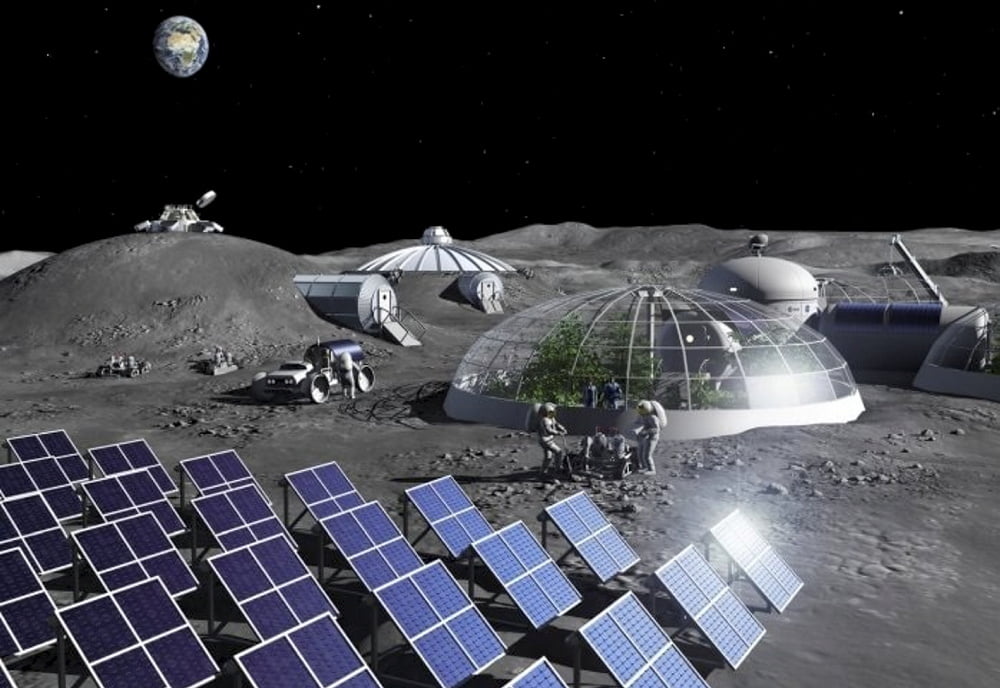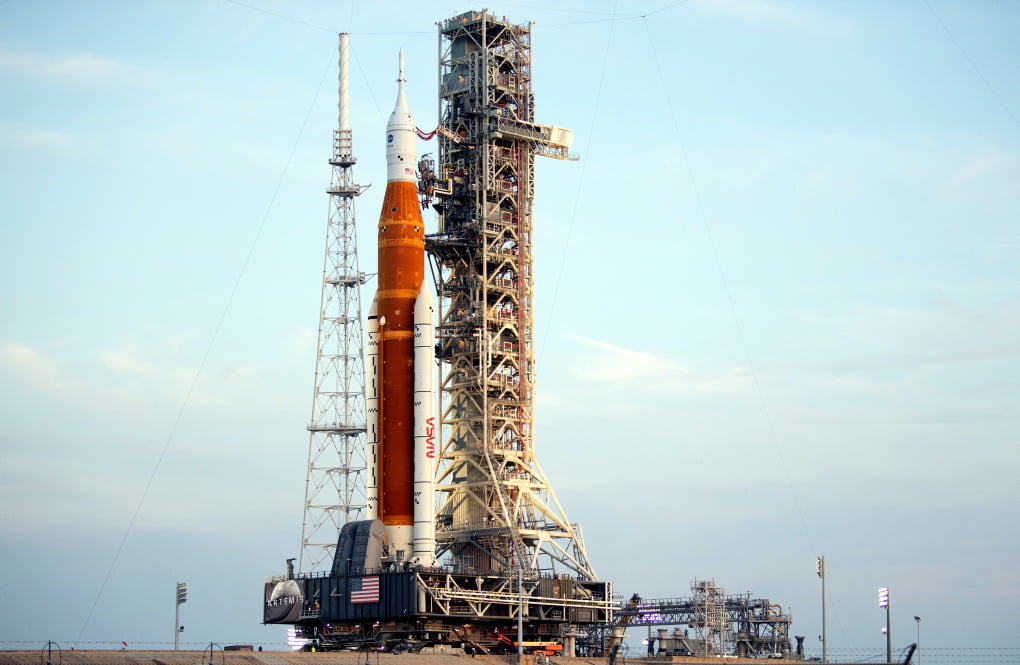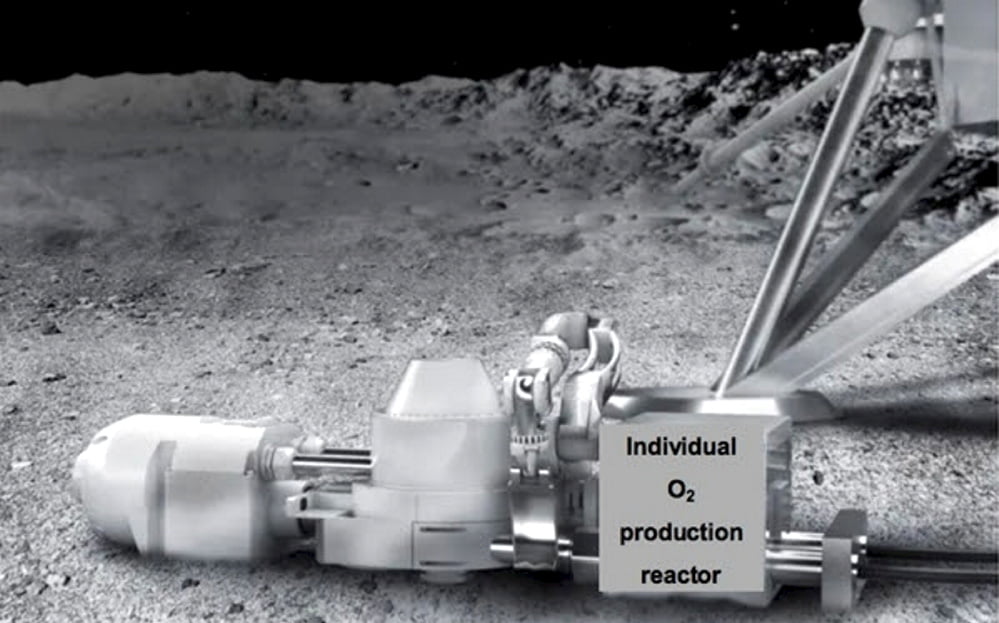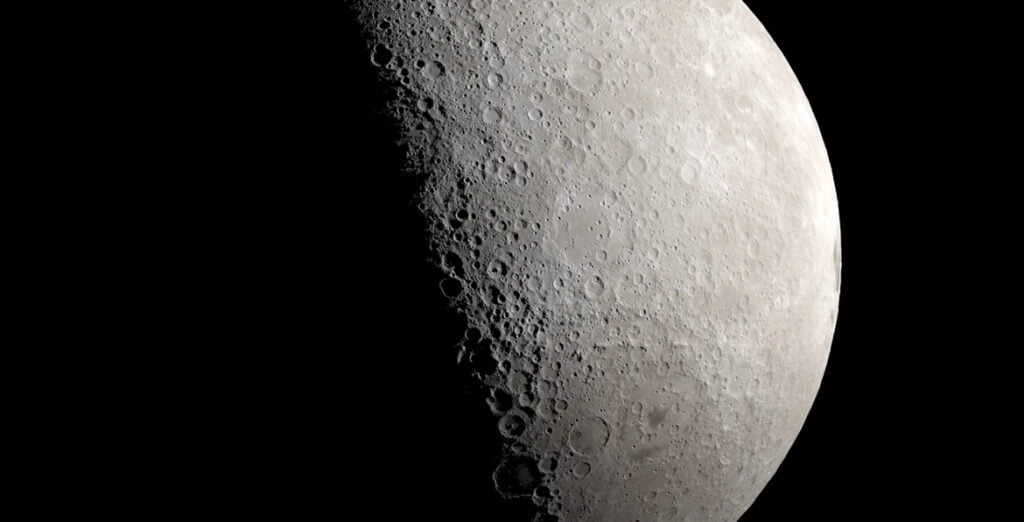Prof’s plan to generate oxygen as rocket fuel for NASA missions
It’s been half a century since man last walked on the moon, but the space race is now on again.
NASA’s first lunar landing since Apollo 17 is planned for 2025, when four crew members are due to blast off in Artemis III. And they’ll be followed by a series of crewed missions aimed at exploring not only the Moon, but Mars as well, by 2035.
Generating power on the moon is a vital part of the program. You need power to create oxygen. And you need oxygen, in part to allow human visitors to breathe, but primarily as rocket fuel.
The Moon is set to become a gas station, of sorts, allowing rockets to re-fuel for their return to Earth, or fill up for their onward journey to Mars.

The Moon has no atmosphere, but oxygen is available if you heat lunar soil to extremely high temperatures. And that requires power.
There are no fossils fuels on the Moon, and there are no wind, wave or hydropower options. So NASA, and other space agencies as well, have been investigating the only two possible sources – nuclear and solar.
An Israeli expert, Prof Jeffrey Gordon, from Ben-Gurion University, has come up with solution that could swing things in favor of solar. He doesn’t work for NASA, but they’ve taken a keen interest in his idea.

There are some big pluses to harnessing solar energy on the Moon. No atmosphere means no clouds, so sunlight is guaranteed. But a “day” on the Moon lasts for just over 29-and-a-half days, so half of that will be “night” with no sunlight at all. That’s a minus.
Storing power in batteries is complex and expensive enough on Earth, but every kilogram of equipment sent to the Moon costs $1 million.
So the challenge is to provide a constant supply of power, at any time of the day or night, while keeping the hardware to a bare minimum.
Prof Gordon’s solution, put very simply, is to install a ring of photovoltaic solar panels – as used on Earth – around one of the Moon’s poles, so that at any point in its rotation, some of them are in the sun and generating power.
Theoretically they could be spaced out around the Moon’s equator, but that would require a lot more heavy infrastructure connecting them to each other and to the reactor – the machine that heats lunar soil so it releases oxygen. Circling the poles means everything would be manageably close together.

Prof Gordon, of the Department of Solar Energy and Environmental Physics, says the ideal position for the solar panels would be around three degrees latitude away from the poles.
Sign up for our free weekly newsletter
SubscribeHe published his paper, entitled Uninterrupted photovoltaic power for lunar colonization without the need for storage in the journal Renewable Energy in February.
“Less than two days after I published it, I was contacted by the director of the solar power division of NASA in Cleveland, Ohio,” he tells NoCamels.
“He said they were having a conference in August on various aspects of solar power in space, and lunar colonization was now high on our agenda and our priorities. He said, ‘We would love it if you would come and present this and discuss it with us’.”

Prof Gordon says his solution could prove to be “noticeably superior” – as measured by weight of equipment transported to the Moon against electricity production – to either of the options currently being considered by NASA, namely nuclear reactors or solar with battery storage.
“On the moon, we have two factors working in our favor. One is there’s no atmosphere, so if you can point at the sun, no matter what latitude you’re at, you obtain the same solar intensity,” he says.
“The other is that the tilt of the moon is small, so the seasonal dependence is much smaller.”
Polar latitudes on Earth don’t get enough radiation from the sun to make solar energy worthwhile, but on the Moon they do. And because there’s no weather to factor in, the amount of sunlight they receive is completely predictable.

NASA says it will need thousands of tons of oxygen a year for “colonization” – a term that sounds like huge populations re-settling 240,000 miles from home, but refers mostly to the production of propellant for rockets.
They run partly on hydrogen, which can’t be produced on the Moon, and mostly on oxygen, which can. “There’s soil everywhere on the Moon and it’s 45 per cent oxygen by composition,” says Prof Gordon.
“It’s just that the soil has to be decomposed into pure oxygen in the metals. The amount required to launch rockets from the Moon is much less than on Earth because the gravitational pull on the Moon is one-sixth that of Earth.”

Prof Gordon is convinced his solution for energy on the Moon is better than existing options, but he must wait to see what NASA will say.
“Our new strategy is more than a factor of 100 better than solar with battery storage. It is also at least a factor of six superior to the solution now being contemplated by NASA of nuclear reactors driving conventional turbines and generators,” he says.
Related posts

Israeli Medical Technologies That Could Change The World

Harnessing Our Own Bodies For Side Effect-Free Weight Loss

Missing Protein Could Unlock Treatment For Aggressive Lung Cancer




Facebook comments